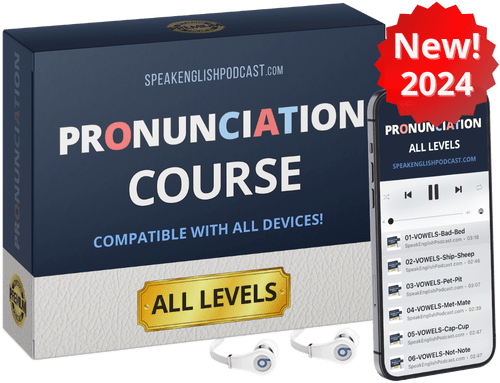Listen to a new episode of Speak English Now Podcast, your favorite material for practicing your spoken and heard English. You will also learn about lifestyle and culture, language, vocabulary, and how to improve your English more effectively.
Transcript:
Hi, everyone!
I’m Georgiana, founder of SpeakEnglishPodcast.com. My mission is to help YOU to speak English fluently.
In today’s episode:
I’ll be talking about one of the most celebrated holidays in the United States: Halloween. After that, you’ll practice your speaking with a new mini-story, while enjoying my new Question & Answer story.
Very well. Let’s get started!
Halloween is a holiday celebrated on the last day of October. I would say it’s very popular because everybody’s excited about it, especially children.
The word Halloween comes from an old English expression, “All Hallows’ Eve,” and it means the day before All Saints’ Day.
Children of all ages really love Halloween because they can dress up in funny costumes and knock on their neighborhood doors shouting “Trick or Treat!”. The neighbors usually give them candies.
The meaning of the phrase “Trick or Treat” is interesting. In this context, “treat” means getting the candies, and “trick” implies the consequence of not getting the sweets. It’s like an innocent threat children make. Of course, kids get really excited when they knock on stranger’s doors in their neighborhood.
Since Halloween originated as a celebration connected with evil spirits, the most common symbols are witches flying on broomsticks, ghosts, skeletons, black cats, etc. The black color is one of the traditional Halloween colors.
Of course, pumpkins are also a Halloween symbol. I’m sure you’ve seen them in movies. People empty pumpkin and put a candle inside to make a lamp.
How do you make a Halloween pumpkin?
· The first step is hollowing out the pumpkin.
· After we use a keyhole saw to cut the hole.
· When using a candle for illumination, you can cut the hole in the pumpkin’s top.
· For electric lights, make a hole in the bottom or side so you can hide the cord.
The Halloween pumpkin is called Jack-O’-Lantern. It’s common to see jack-o’-lanterns on doorsteps decorations before and on Halloween.
The name comes from an Irish legend about a man named Jack. He was so ungenerous that when he died, he couldn’t enter heaven, but he couldn’t go to hell either because he had told jokes about the devil. As a result, Jack had to walk and walk with a lantern until the Day of Judgment.
Get the FULL TEXT in PDF here.
Resources:
- Audio mp3 (right-click to save the audio)
- FULL-TEXT PDF (right-click to save the TEXT)



Hi Georgiana!
Thanks very much for this interesting and entertaining episode about Halloween 🎃.
I never wondered about the origin of this famous holiday, because I’m Italian and it has reached our homes quite recently.
Congrats for your English course I’ve already became a fun of it.
Alessandra
That’s for this interesting episode Halloween it entertains me very much and more fun than you a lot Georgiana.